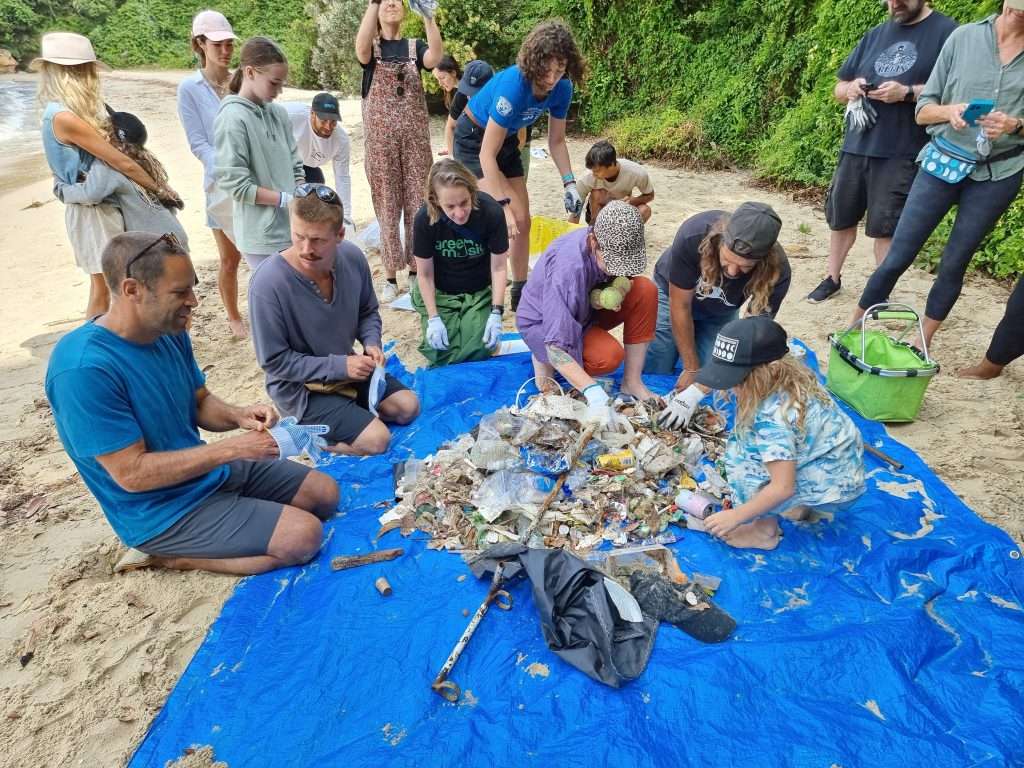Citizen science reveals local origins of marine debris in NSW
Photo credit: AMDI Partners, Woebegone Marine Debris Crew and Woebegone Freedive at their local clean-up.
For over 20 years, everyday people, businesses and organisations have been participating in beach clean-ups and contributing data to the Australian Marine Debris Initiative (AMDI) Database. Researchers at UNSW have now used this data to inform oceanographic models that tracked plastic along the NSW coastline back to their most likely source.
New research published in Marine Pollution Bulletin this week is the result of a collaboration between Tangaroa Blue Foundation, UNSW School of Biological, Earth and Environmental Sciences and the UNSW Centre for Sustainable Development Reform. The study combines data from the AMDI Database (the largest marine debris database in the southern hemisphere) with sophisticated oceanographic modelling to track how plastic moves through our coastal waters.
Key Findings
The research revealed that most plastic pollution arriving on NSW beaches comes from far closer to home than you (and many other researchers) may think:
- Most plastic debris returns to shore within just 8 days
- Debris typically travels at sea for less than 20 kilometres (about the distance from Newcastle to Caves Beach). This is consistent with 10 years of surveys of marine debris surveys across Australia, which revealed that at least half of all marine debris sampled on beaches could directly be linked to land-based sources (Gacutan et al., 2022).
- Sources of debris are predominantly within 15 kilometres of the coastline
- A significant ‘accumulation zone’ exists between Sydney and Newcastle, where debris is likely to accumulate
“We used data collected by citizen scientists on Australian beaches to inform our oceanographic modelling so we could identify the likely origins of the debris,” explains lead author Dr Claudia Gaby Mayorga Adame.
“What we found was surprising – 50% of plastic debris returns to shore within just 8 days.”

Pictured: Volunteers sorting marine debris in Sydney for the AMDI Database.
Why citizen science data?
Most studies that model marine debris often don’t use direct observation data but instead rely on assumptions. When the team compared two modelling approaches – one informed by observations and the other without – the observational data clearly altered findings and provided more accurate and actionable insights.
Researchers identified a single ‘accumulation zone’ between Sydney and Newcastle where debris is likely to accumulate. “By using actual debris data collected by volunteers through the Australian Marine Debris Initiative, we could pinpoint a priority area that could become the target for management efforts,” explains co-author Dr Jordan Gacutan. “This contrasts with models that haven’t used empirical data, suggesting multiple hotspots along the coast.”
Evidence-based decision-making and management
This research demonstrates just one of the many practical uses of citizen science data to inform marine pollution management. As a result of this study, we better understand how marine debris moves along the Australian coastline and likely debris hotspots. This information can be used to inform:
1. Local actions can have a significant impact:
- Finding that 50% of debris likely arises from local sources means that local clean-up and prevention efforts can have measurable impacts.
- This challenges the perception that the majority of marine debris arises from offshore or far away sources and is ‘someone else’s responsibility.’
2. Targeted activities: Clean-ups organised by local councils and civil society can focus efforts on the likely ‘accumulation zones’ where debris is likely to be released into the environment.
3. Improved prevention:
- Local governments can focus on improving waste management infrastructure and services in coastal and estuarine areas.
- Education and behaviour change programs can be targeted at communities near estuarine and coastal areas.
4. The importance of data for evidence-based management of marine pollution:
- Data on plastic are crucial to understanding the scale of the problem, make evidence-based decisions and track the effectiveness of management efforts over time. Despite its importance, data on plastic are extremely difficult to collect, store and manage.
- “By demonstrating how citizen science data can enhance scientific models to provide more accurate, practical insights,” says co-author and Tangaroa Blue Foundation reporting officer Bella Charlesworth, “this research demonstrates how citizen science could be a key player in fulfilling national data gaps.”
Want to contribute to the growing database of citizen science data?
Become a citizen scientist and join us at a local beach clean-up to help collect data for the Australian Marine Debris Initiative (AMDI) Database. Or why not share this research with your local council to support evidence-based marine debris management in your area.
This work contributes to the Australian Research Council Discovery Project DP230100505 and was supported in-kind by the Global Ocean Accounts Partnership.






